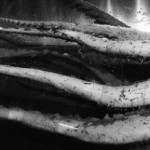
Before the comb jelly, the sea sponge was believed to have a genetic signature that stood out as being different. Image: Shutterstock
Making a genetic comparison between species is almost impossible.
To answer, we first need to look at the evidence for the theory of common descent, which holds that all life on Earth descends from a single organism that originated about 3.9 billion years ago.
According to the theory, all living organisms have evolved from the common progenitor through mutations in their DNA; where single DNA bases were altered, small changes occurred, and where large DNA sequences were copied and moved elsewhere, there were big changes. The result is the biodiversity that we know today.
However, organisms don’t have the same number of genes and their genes are different, which makes it impossible to make a direct comparison. Instead, a few hundred genes are selected and compared; information is thus combined in order to make an overall assessment of their mutual relationship.
Scientists once believed that the primitive sponge had branched off from the evolutionary tree before any other lineage, suggesting that its DNA would be the most unlike any other animal. But an analysis of animals’ lineages in 2008 demonstrated that a group of animals called comb jellies (Ctenophora) had a genetic signature that stood out as being really different, making it a relic of the very first animal on Earth.
Got a burning science question?
Send us your questions to letters@scienceillustrated.com.au. If we publish the answer on our website or in the next issue of Science Illustrated you could win amazing prices!






